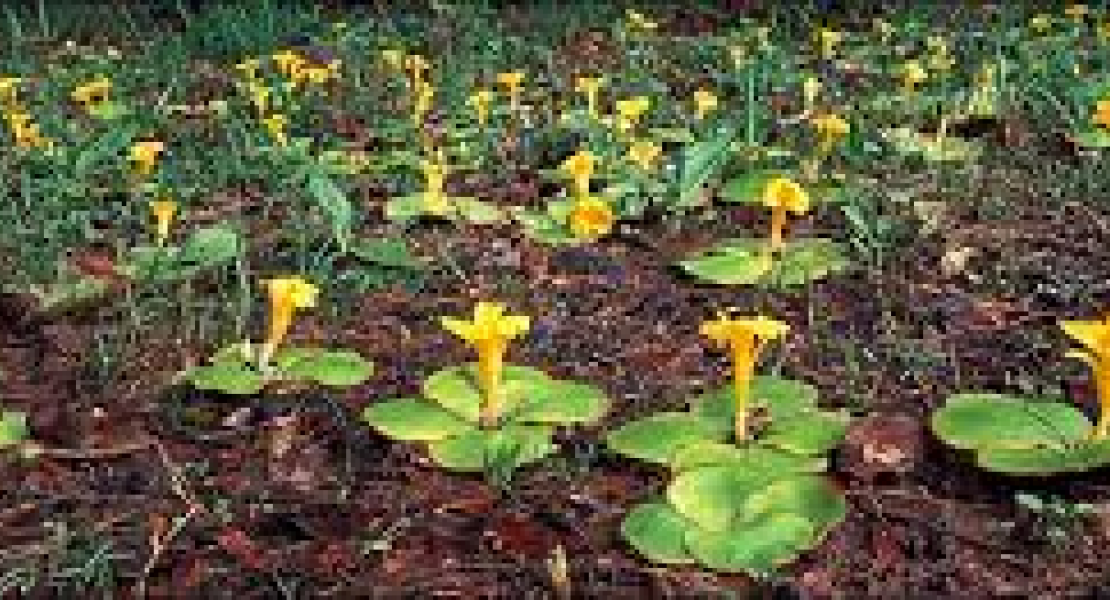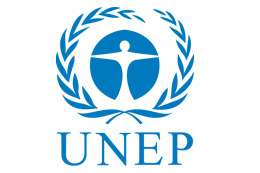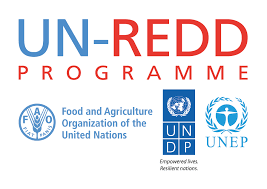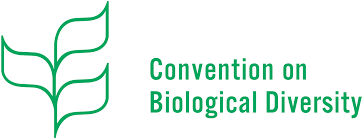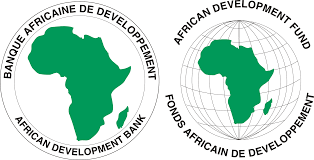The Great Green Wall Initiative for the Sahara and Sahel programme was initiated and adopted by the Head of Governments and States of the African Union in 2005 to address the issues of desertification, land degradation, bio-diversity loss, promote climate change resilience by ecosystems and communities, and improve food security in the about twenty-one countries of the Sahel region in Africa. The initiative does not literally mean to "build a green wall” but is really about "Sustainable Land Management and restoration program adapted to the development priorities of the countries involved." 1.
As part of its commitment to contribute to the African Union's Great Green Wall of the Sahara and Sahel Region Initiative, Nigeria in 2015, through an Act of Parliament, set up the National Agency for the Great Green Wall (NAGGW)2. This agency typifies Nigeria's coordinated effort to address issues of land degradation, desertification, ensure ecosystem management and restoration, protect the country's natural capital, provide sustainable development of land resources, and ultimately ensure that the country's ecosystem is prepared to withstand the travails of climate change. The agency states its focus in its mission statement:
The mission of the NAGGW is to halt and reverse land degradation, prevent depletion of biological diversity, ensure that by 2025, ecosystems are resilient to climate change and continue to provide essential services that would contribute to human welfare and poverty eradication3.
Because the GGW initiative focuses on the areas around the Sahel and Sahara, Nigeria's focus is primarily on the following states which are affected by desertification (and by implication affecting the livelihood of over 50million people4); Adamawa, Bauchi, Borno, Gombe, Jigawa, Kano, Katsina, Kebbi, Sokoto, Yobe and Zamfara. These areas constitute about 35% of Nigeria's total land area5.
Nigeria has also developed a five-year strategic plan that will engender coordinated efforts at advancing the objectives of the GGW initiative. Part of the plan is through awareness creation by sensitizing youths, men, and women, and through strategic partnership between government, communities, and development agencies. The National Strategic Action Plan, which Nigeria has drawn up and is implementing is a key plank of the Implementation Strategy of the GGWSSI. This National Strategic Action Plan must of course be "aligned to [the] Harmonized Regional Strategy, provisions of the GGW Convention, the National Plans to combat Desertification and the national priorities of the countries involved."6.
The country has also further set up an institutional arrangement to enable it to implement the plans set out in its National Strategic Action Plan. The institutional arrangement is as follows:
- National Council on Great Green Wall: The Council is the Governing body for the Agency and provides policy direction for the programme implementation among others.
- State Implementation Committee: The Committee is to coordinate the implementation of the programme at State level.
- Local Government Implementation Committee: The Committee is to coordinate the implementation of the programme at Local Government and Community levels7.
Key Information
- Nigeria is a signatory to the Great Green Wall Convention
- 22,500sqkm of degraded land in the dry region of the country will be rehabilitated for agricultural production and the livelihoods of over 25 million people will be improved by the year 2030, through the GGW initiative.
- The GGW Initiative in Nigeria seeks to recover degraded land, preserve ecosystems, and provide sustainable livelihood opportunities for communities.
- Because the future belongs to the youths, Nigeria's GGW Initiative anchors on youth inclusivity.
- The initiative also seeks to check drought and provide infrastructure that provide alternative sources of water.
- The GGW corridor in Nigeria is about 35% of the country's land mass.
- Successful implementation of the National Strategic Plan of the NAGGW in Nigeria's GGW corridor will effectively address issues of herders-farmers clashes and ameliorate extreme poverty.
- 15% of funds allocated to Nigeria’s Ecological Fund is committed to the GGW Initiative in the country.
Key Achievements
Source: United Nations Convention to Combat Desertification (UNCCD) at The Great Green Wall Initiative | UNCCD
In Nigeria, the GGW Initiative is working to prevent or reverse the degradation of ecosystems while improving the living conditions of affected communities by enhancing the provision of ecosystem services.
One of the key components of the Nigerian GGW program is the establishment of a 1,359 km contiguous shelterbelt from Kebbi State in northwest to Borno State in the northeast, serving as a windbreak.
Key results in Nigeria:
- 7.6 million plants and seedlings produced
- 2 801 ha of reforested lands
- 373 ha of multipurpose gardens
- 709 km windbreaks
- 1 205 people trained on food and energy security as well as maintenance of biodiversity
- 1 396 jobs created for the inhabitants
It is important to point out that in implementing its GGW initiative, Nigeria also hopes to tackle the security issue of farmers-herders clashes (a menace which has cost the country so many lives and left it at the brink of total breakdown of law and order) which is a consequence of the Southward movement of herders due to the degradation of the ecosystem in Nigeria’s GGW corridor.
Nigeria's GGW experience also entails the rehabilitation of Internally Displaced Persons while degraded lands which had hitherto served as their sources of livelihood are reclaimed.
One must note that in all of these, funding remains a main issue as it is always very difficult for the Nigerian government to appropriate and release funds for issues that concern the environment. Odunjo Omolola captured this aptly; "while the demand for fund for environmental protection is increasing, the actual financial resource allocations relative to other sectors have declined considerably...funds are often misdirected to other uses or embezzled."8. Still, the Government of Nigeria commits 15% of the Ecological Fund to the GGW Initiative. Efforts must now be made to ensure that this slice of funding is completely committed to the GGW Initiative, in addition to other external funding.
It is necessary to point out that in addition to livelihood enhancement and other of its focus areas, the GGW Initiative in Nigeria also anchors on inclusivity. Hence men and women play active roles in the implementation of the strategic plans of the GGW programme in Nigeria.
1 Tangem, Elvis Paul. "Great Green Wall for the Sahara and Sahel Initiative: Building Resilient Communities in Africa's Drylands.” Drylands, Biodiversity, Management and Conservation. Eds. Victor Roy Squires, Mahesh K. Guar & Salah A.E Attia-Ismail. New York, Nova Science Publishers, 2019. Pg. 311.
2 Lawal, Hamzat. "Great Green Wall: Key to Nigeria’s Greatness” https://www.environewsnigeria.com/great-
3 National Agency for the Great Green Wall. "About NAGGW" https://ggwnigeria.gov.ng/about-naggw/.
4 Lawal, Hamzat op cit
5 Food and Agricultural Organization. "The Great Green Wall Programme" http://www.fao.org/3/a-be714e.pdf
6 Tangem, Elvis Paul op cit pg. 316.
7 Food and Agricultural Organization op cit
8 Odunjo, Oluronke Omolola(2013) "Why Nigeria is Not Yet Sustainably Developed" ICESD January 2013.
Cross-cutting Activities and Achievements in Nigeria Since 2013
Nigeria is one of the pioneer countries of the GGWI due to the challenges of land degradation, desertification, drought, vulnerability to climate change and its devastating impacts on the local population especially in the 11 frontline states.
Natural resources related conflicts and climate related migration is very important in Nigeria. Land degradation and subsequent desertification touches 43% of the total land area (923,768 Km2), destroying approximately 2,168 Km2 of rangeland, with the livelihoods of over 40 of + 200 million people under severe threat.
Pressure on land resources, particularly in the 11 States of Adamawa, Bauchi, Borno, Gombe, Jigawa, Katsina, Kano, Kebbi, Sokoto, Yobe and Zamfara is expected to increase, largely driven by socio-economic development, as well as climate change.
The Great Green Wall Initiative objectives in Nigeria
The Nigerian Great Green Wall Program through a coherent set of actions aims to combat land degradation and desertification in the affected States targeting the following objectives:
Natural Resources conservation and development; climate change mitigation and adaptation;
- Reducing unemployment by creating over 10 million job opportunities;
- Enhancing food security;
- Reducing conflicts between herders and farmers over scarce natural resources;
- Strengthening of social infrastructure, especially in rural areas; and
- Diversification of economic activities and improvement of living conditions of the rural communities.
In addition to the above, the Nigerian GGW Program can provide a platform to achieve the following:
- Environmental rehabilitation/restoration of the Northeast Region of Nigeria;
- Environmental rehabilitation/restoration of the Lake Chad Basin;
- Rehabilitation of the Internally Displaced People (Boko Haram Victims) by creating job opportunities, income generation activities and rehabilitation of degraded farmlands;
- Integration of the de-radicalized “Boko Haram” members by creating job opportunities for them, training in alternative livelihood activities at the established GGW Skill Acquisition Centres.
- Reducing Farmers – Herders Conflicts by creating grazing reserves and fodder farms in the 11 Frontline States.
Key Operational Activities and Achievements
(a) Baseline Studies and Environmental Impact Assessment (EIA) have been conducted in the GGW Corridor in clusters to generate the necessary biophysical and socio - economic data for the planning, implementation, and monitoring and environmental impact evaluation of the program.
(b) Community Mobilization, Sensitization and Awareness Campaign The success of the program implementation hinges on concrete strategy for public awareness campaign, complete with campaign messages and strategy for dissemination. In order to sensitize the people and mobilize them towards implementation of the program, the following among others have been accomplished:
- Development of a Communication Strategy
- Sensitization of policy makers at National, State and Local Government levels through Stakeholder Fora
- School outreach program to sensitize and educate the youths
- Sustained Radio and television Jingles in English, Hausa, Fulfulde and Kanuri
- Development and distribution of Information, Education and communication materials including posters and handbills
- Feature articles in Newspapers
(c) Afforestation and Land Management
- Production of 7,611,105 assorted forest and fruit tree seedlings
- Establishment of 643.46km shelter belt
- Establishment of 264.7ha community woodlots
- Establishment of 307.5ha community orchards
- Establishment of 138 community tree nurseries
- Identification of over 500 farmers to be trained and participate in the on- farm natural regeneration project
(d) Promotion of Alternative Livelihoods
Support for alternative livelihoods is one of the major components of the Great Green Wall Program with the following specific objectives:
- Diversification of income for the affected communities
- Reduction of rural poverty
- Generation of employment
- Reduction of pressure on land resources and land degradation
- Enhancement of rural economy
- Curtailment of social unrest and forced migration
(iii) In order to support and promote alternative livelihood activities in the participating communities, the following have been accomplished:
- Construction of Five Skill Acquisition centres for training of unemployed youths in various trades such as carpentry, tailoring, Bee-keeping, electrical and electronic works, computer maintenance, etc.
- Procurement of 200,000 improved date palm seedlings, which were distributed free to farmers to enhance their incomes.
- Establishment of 138 ha of vegetable gardens.
(e) Rural Infrastructure and Renewable Energy
- Provision of 157 solar and wind powered boreholes as sources of water to ameliorate the impact of drought.
- Distribution of over 25,000 improved woodstoves to rural women to reduce deforestation in the dryland region of the country.
(f) Employment Generation
- 498 youths trained and engaged as forest guards
- About 50,610 engaged in planting and other related activities
- About 1,099 engaged in drilling of boreholes

